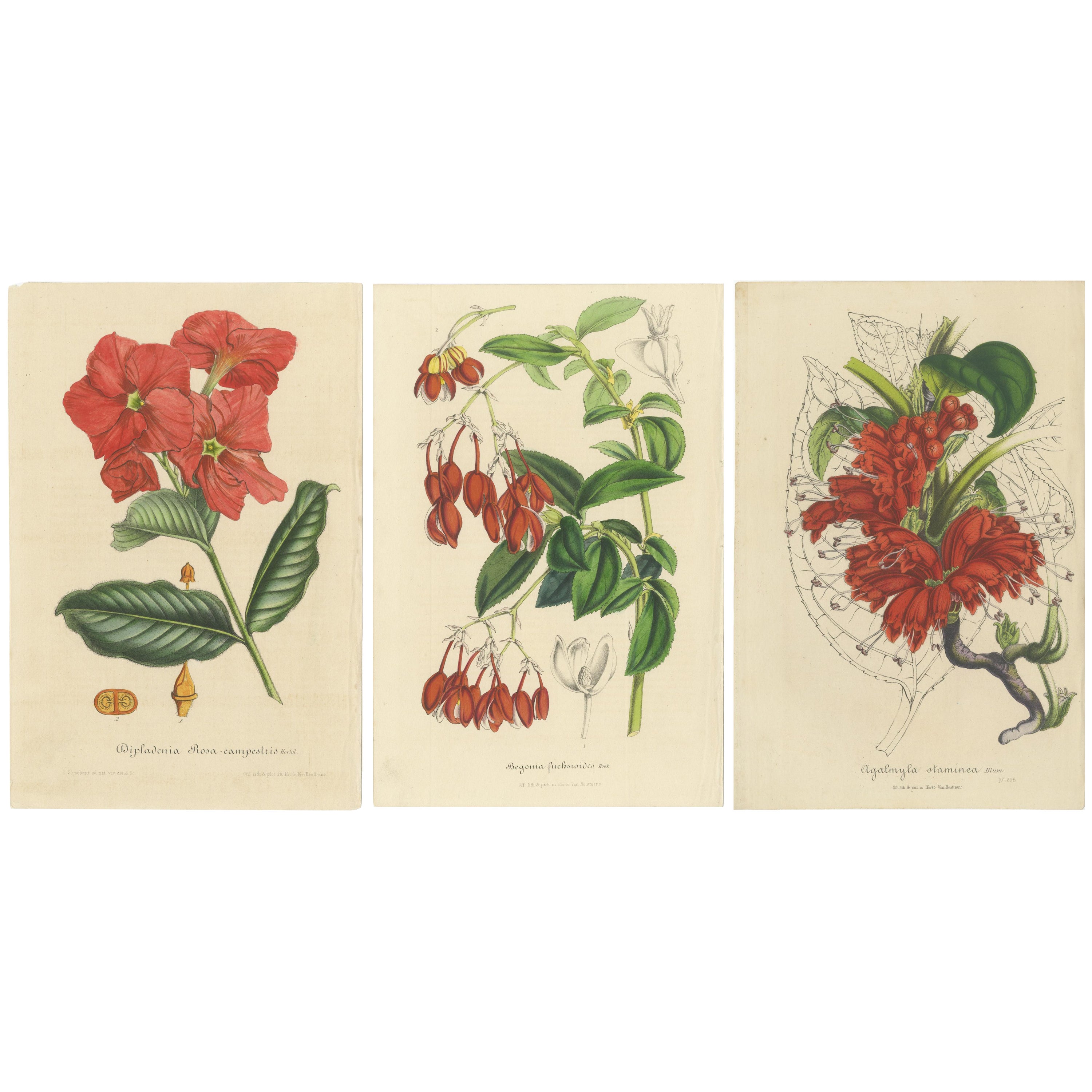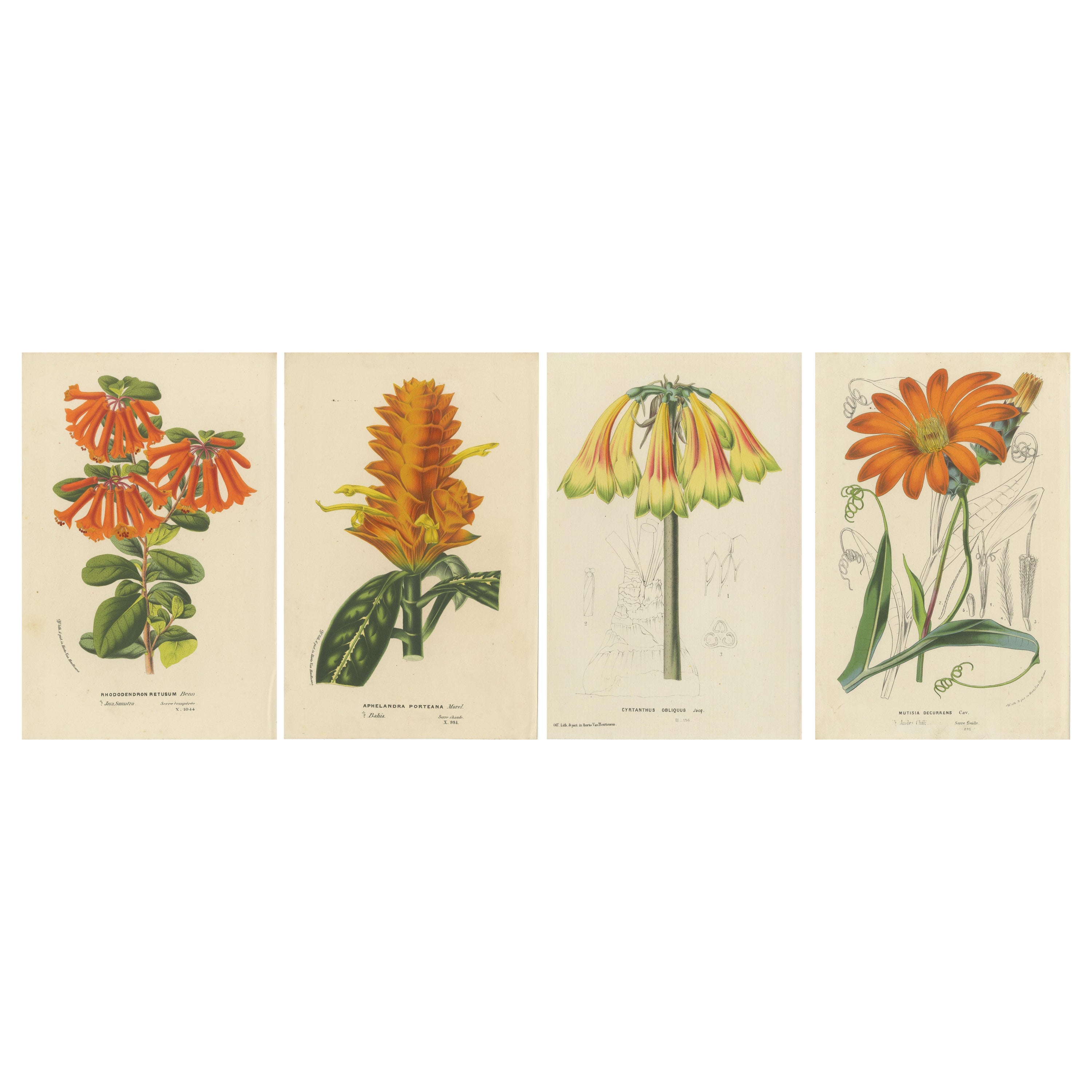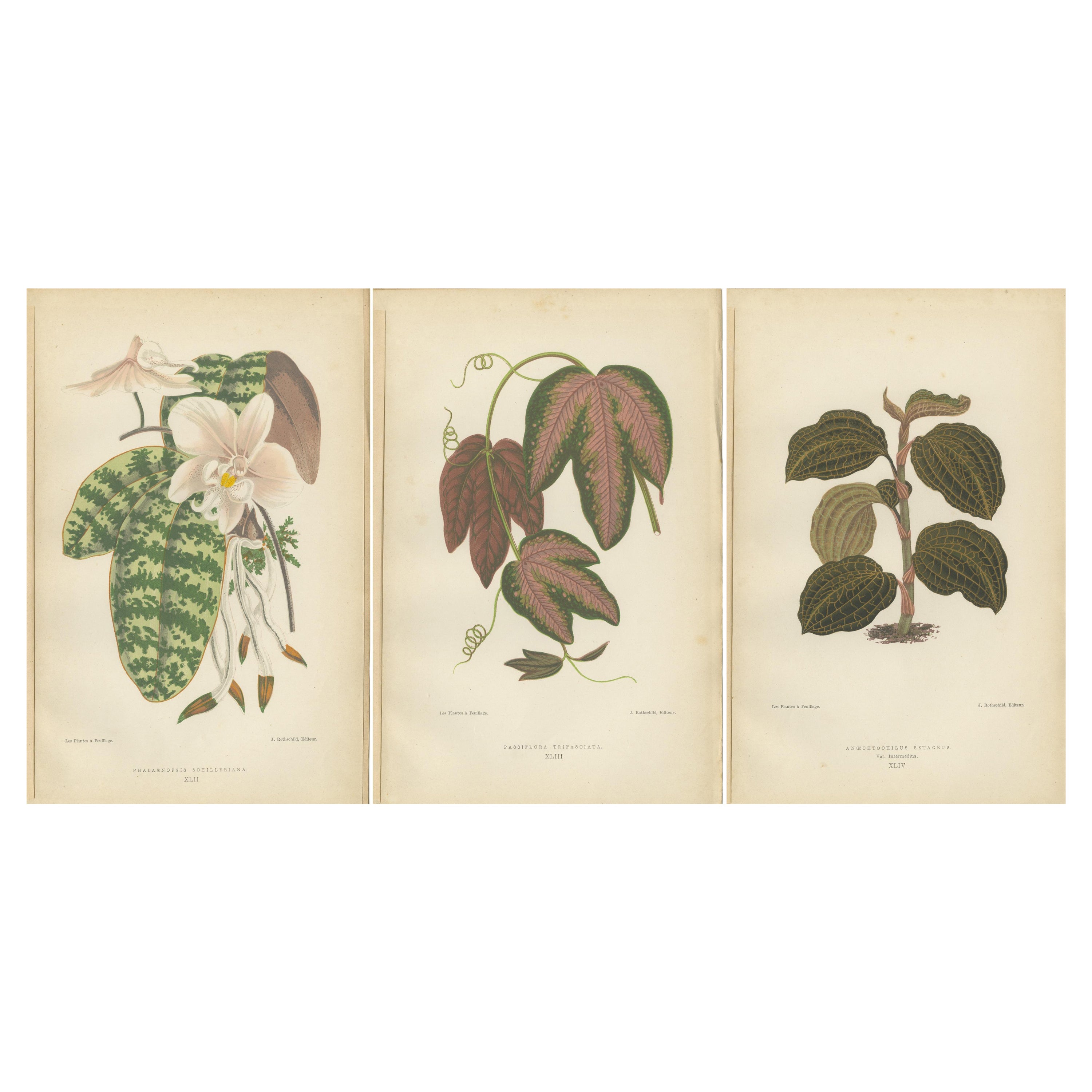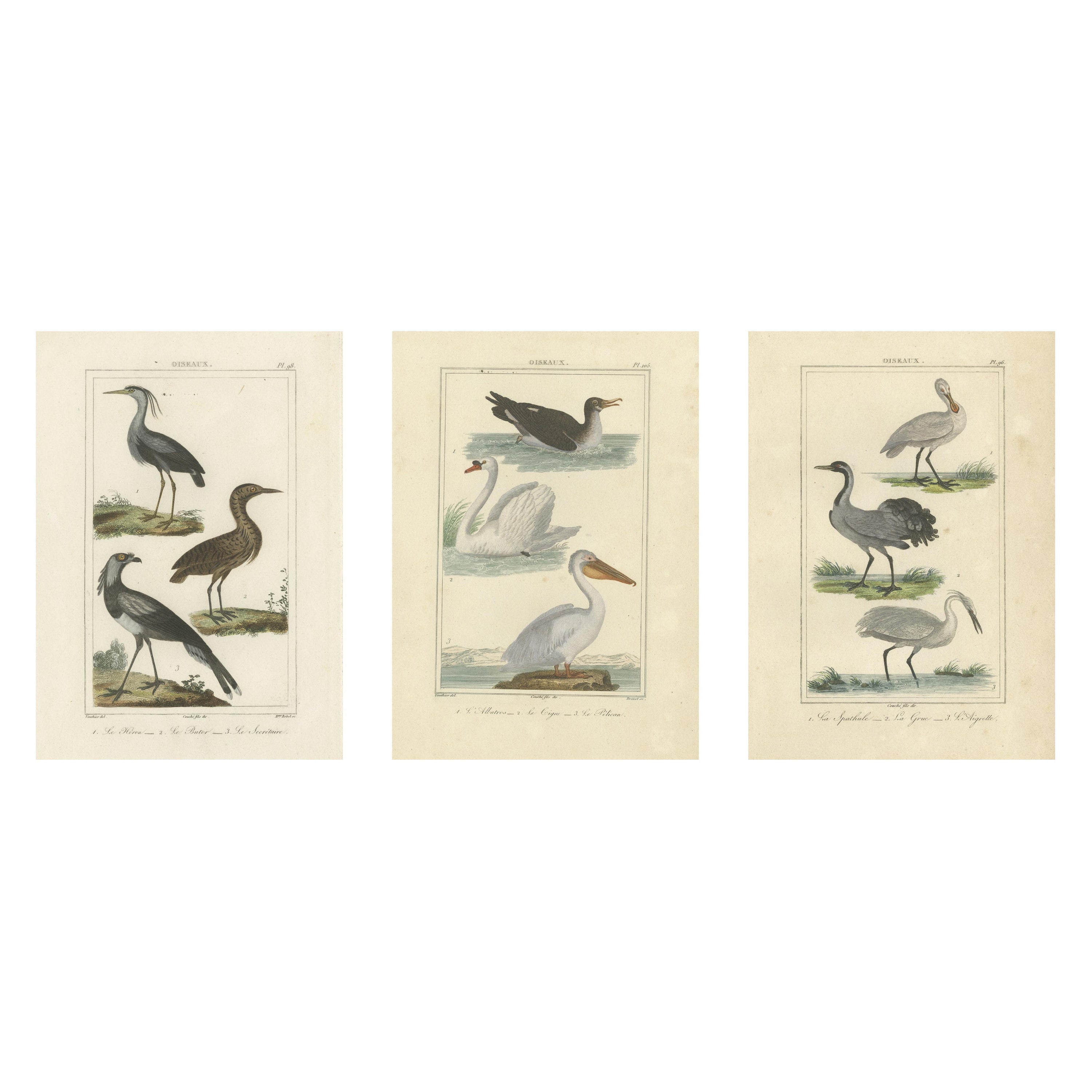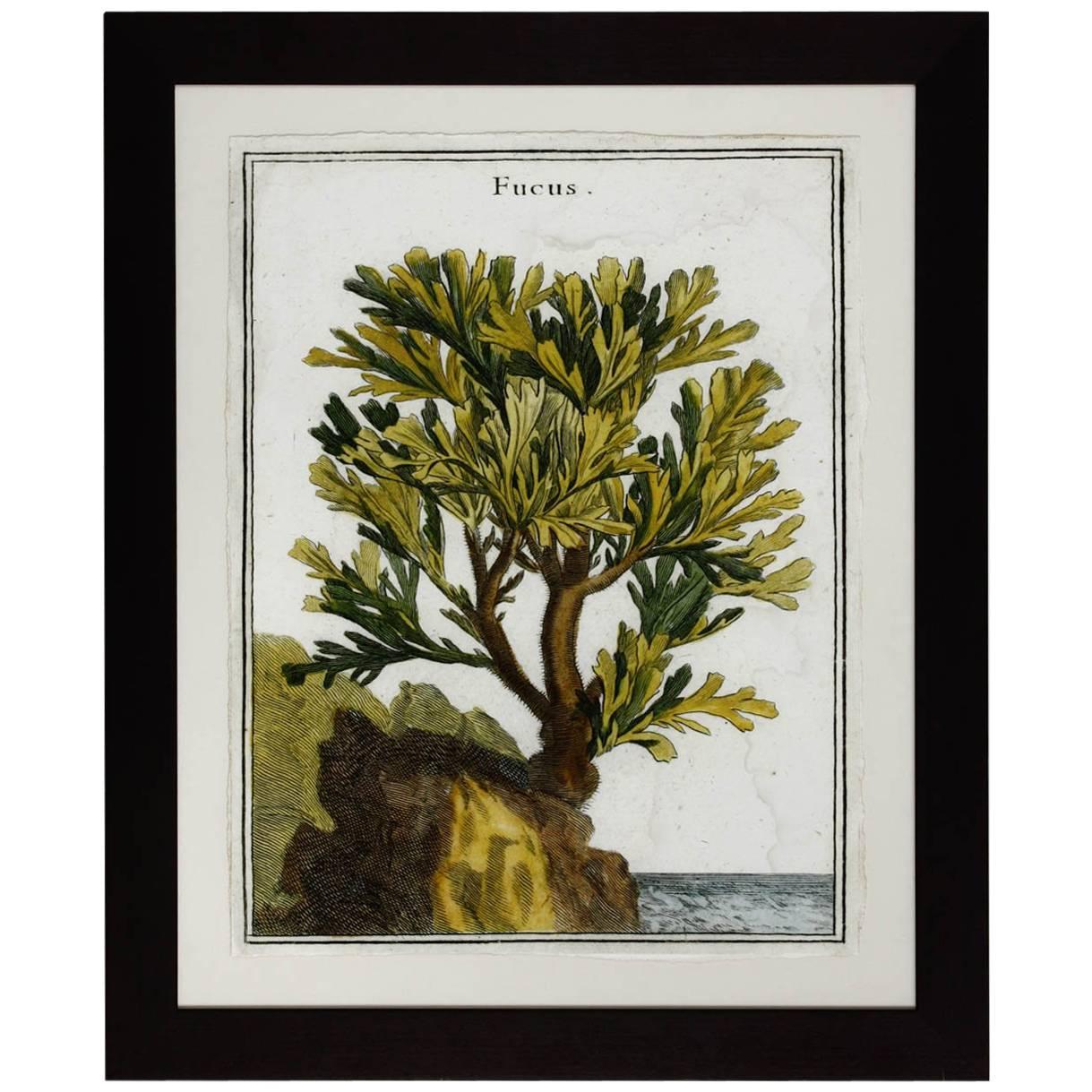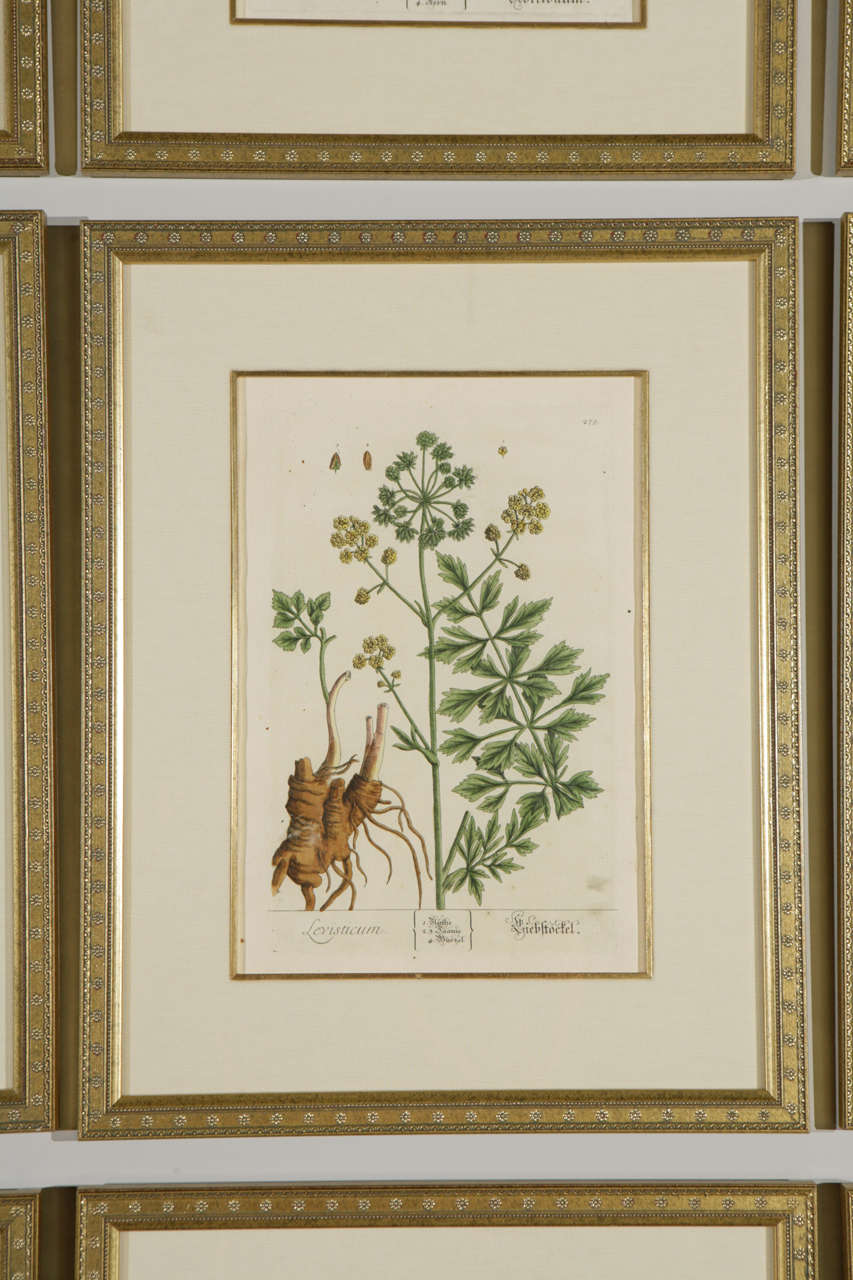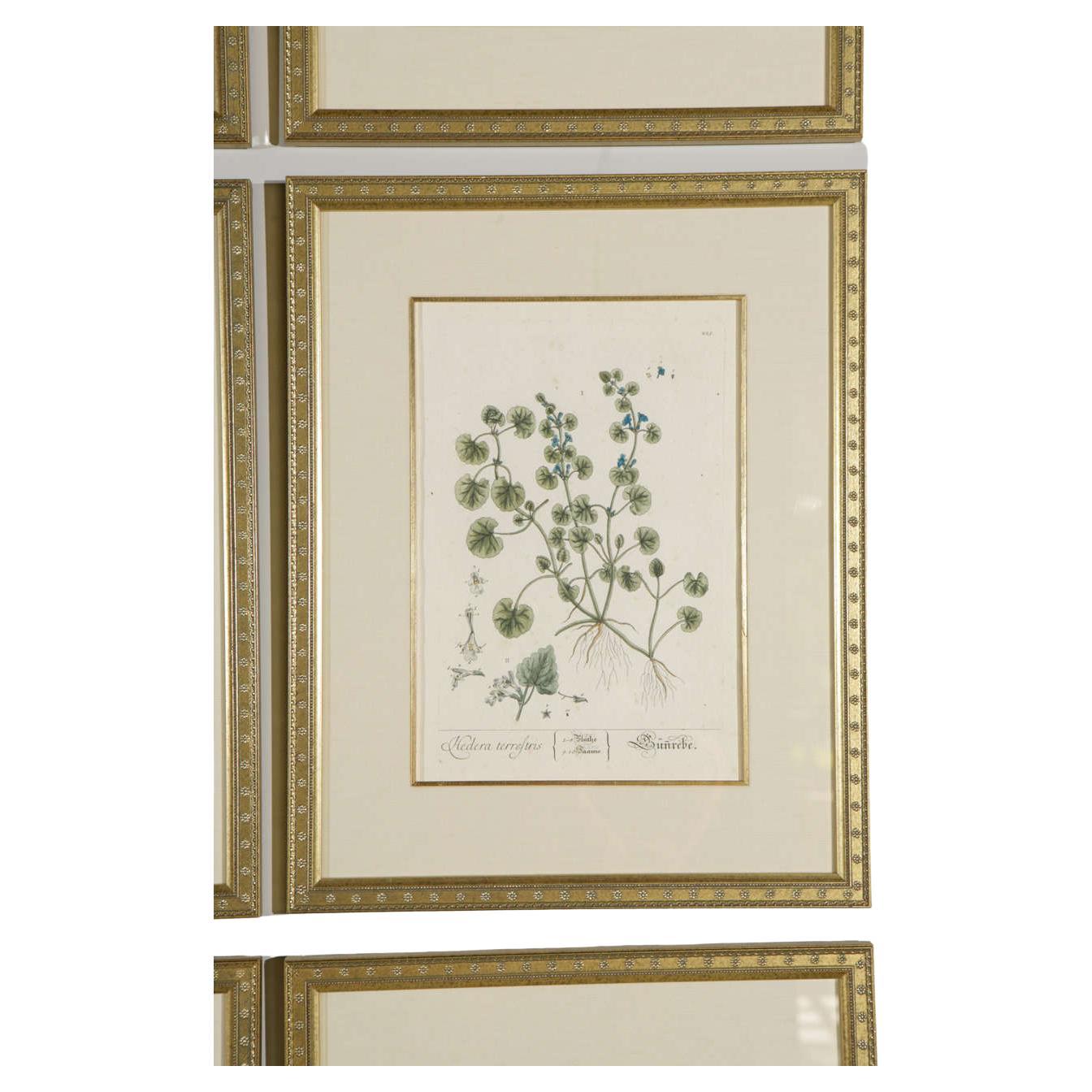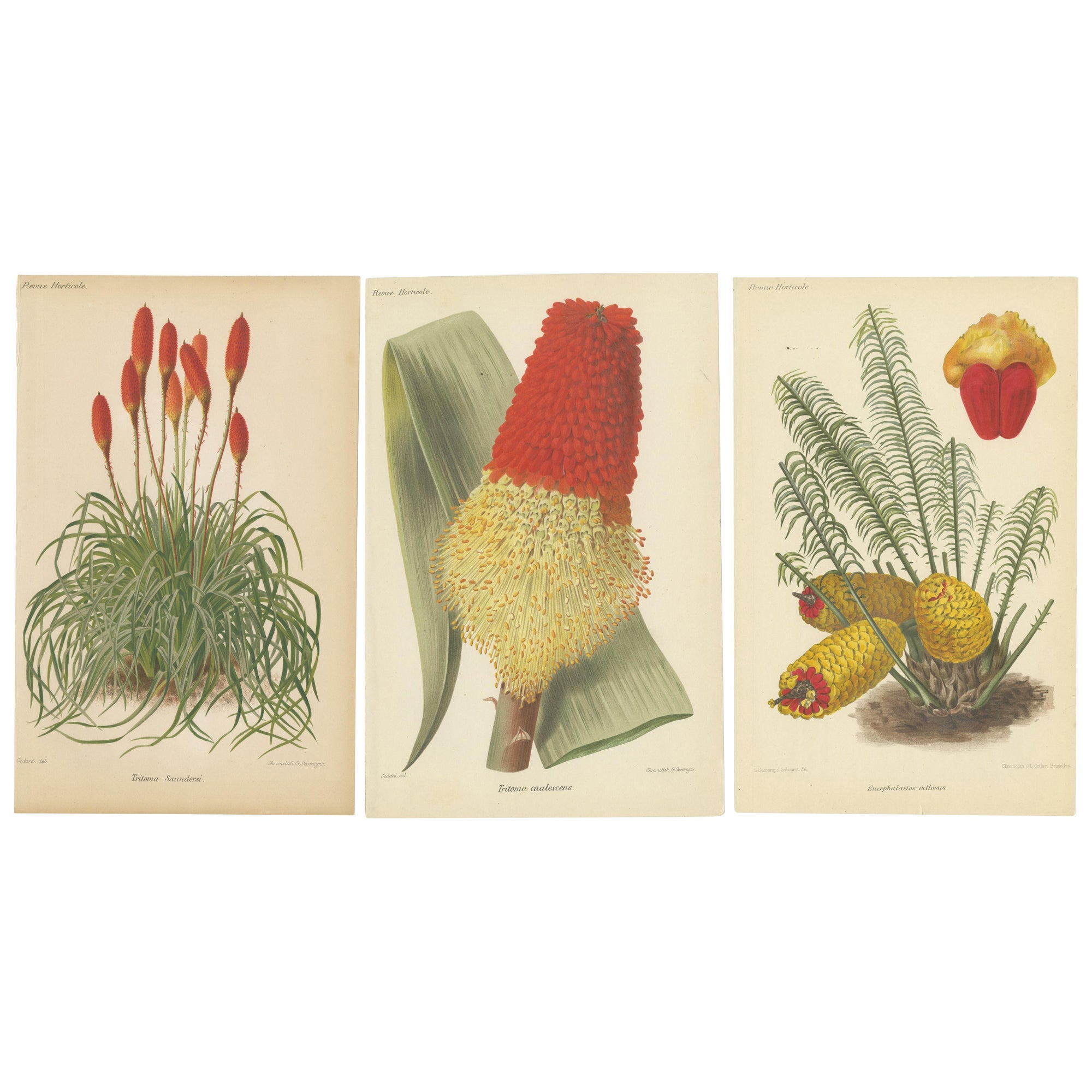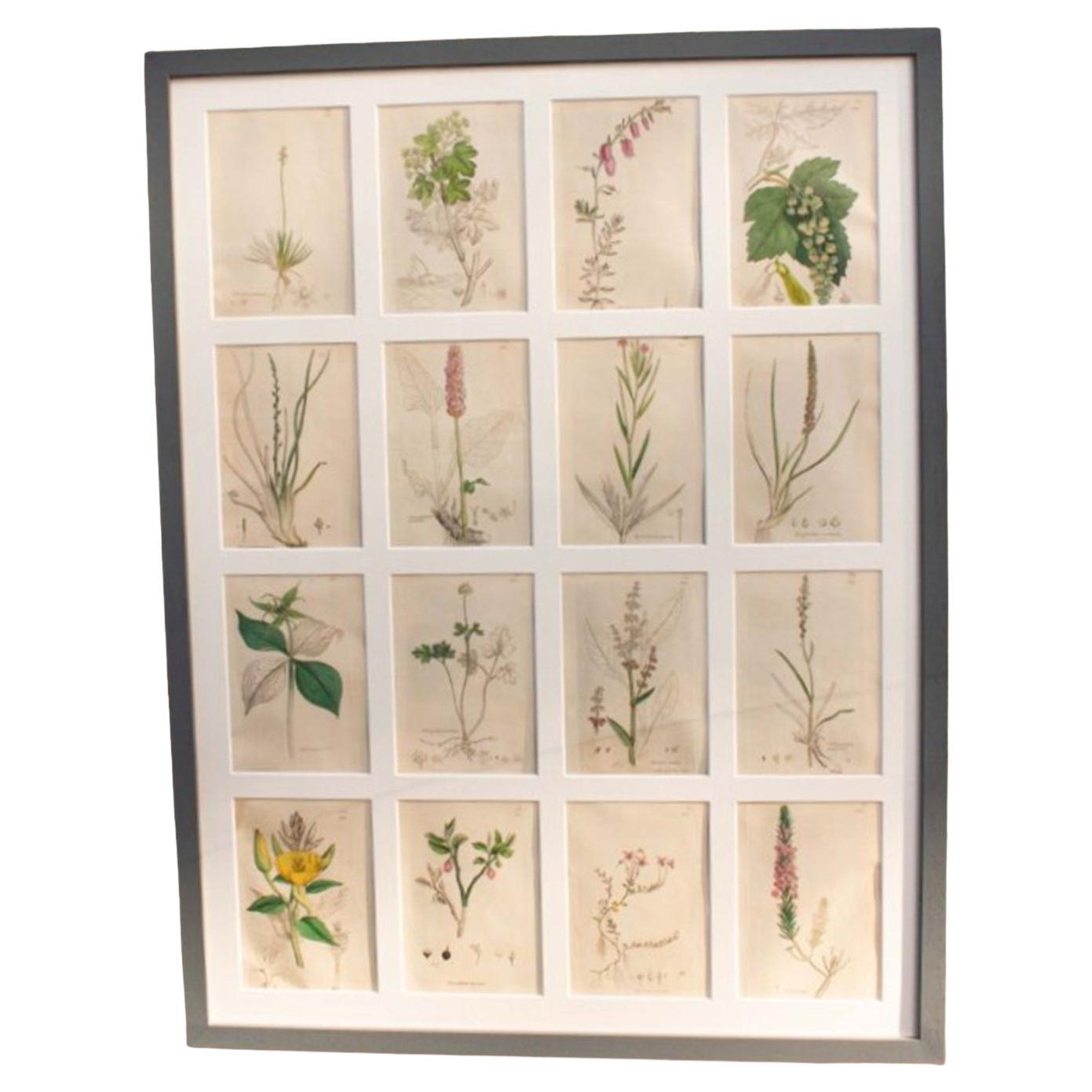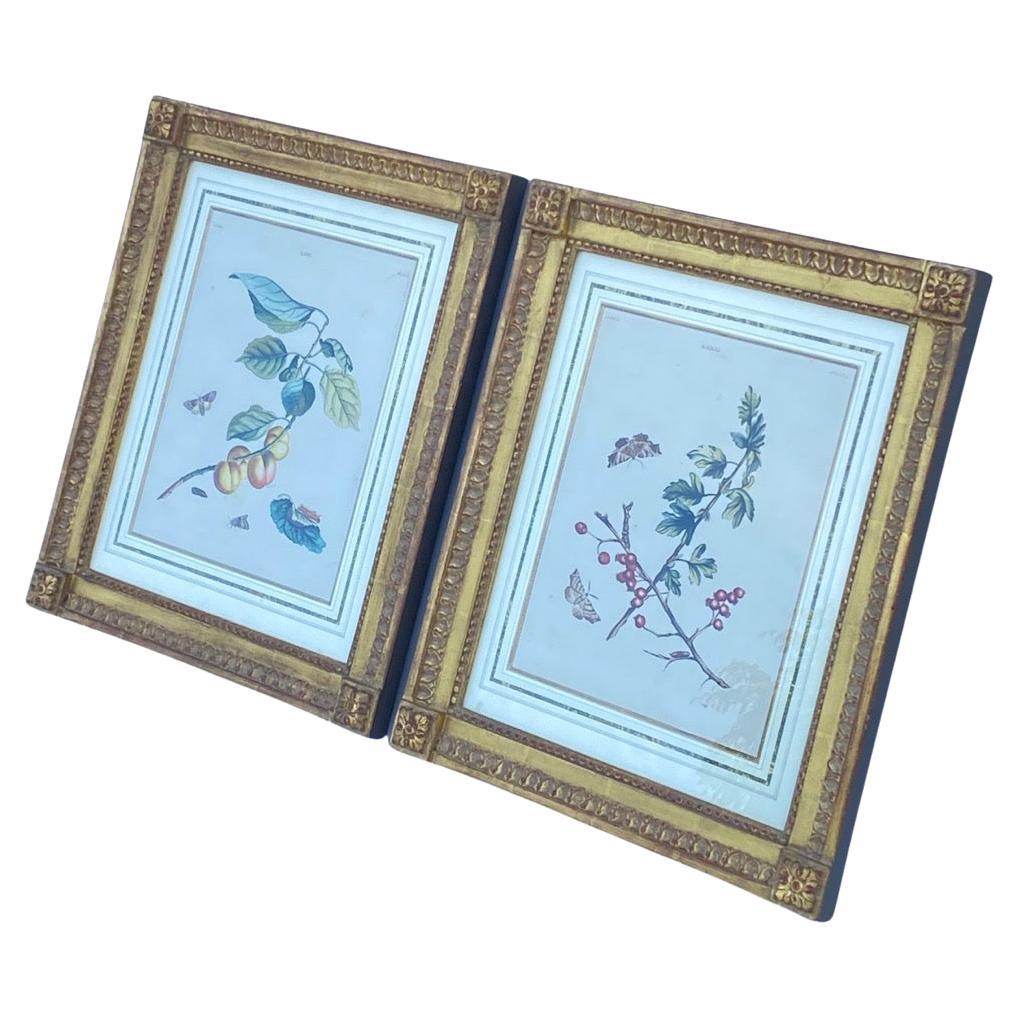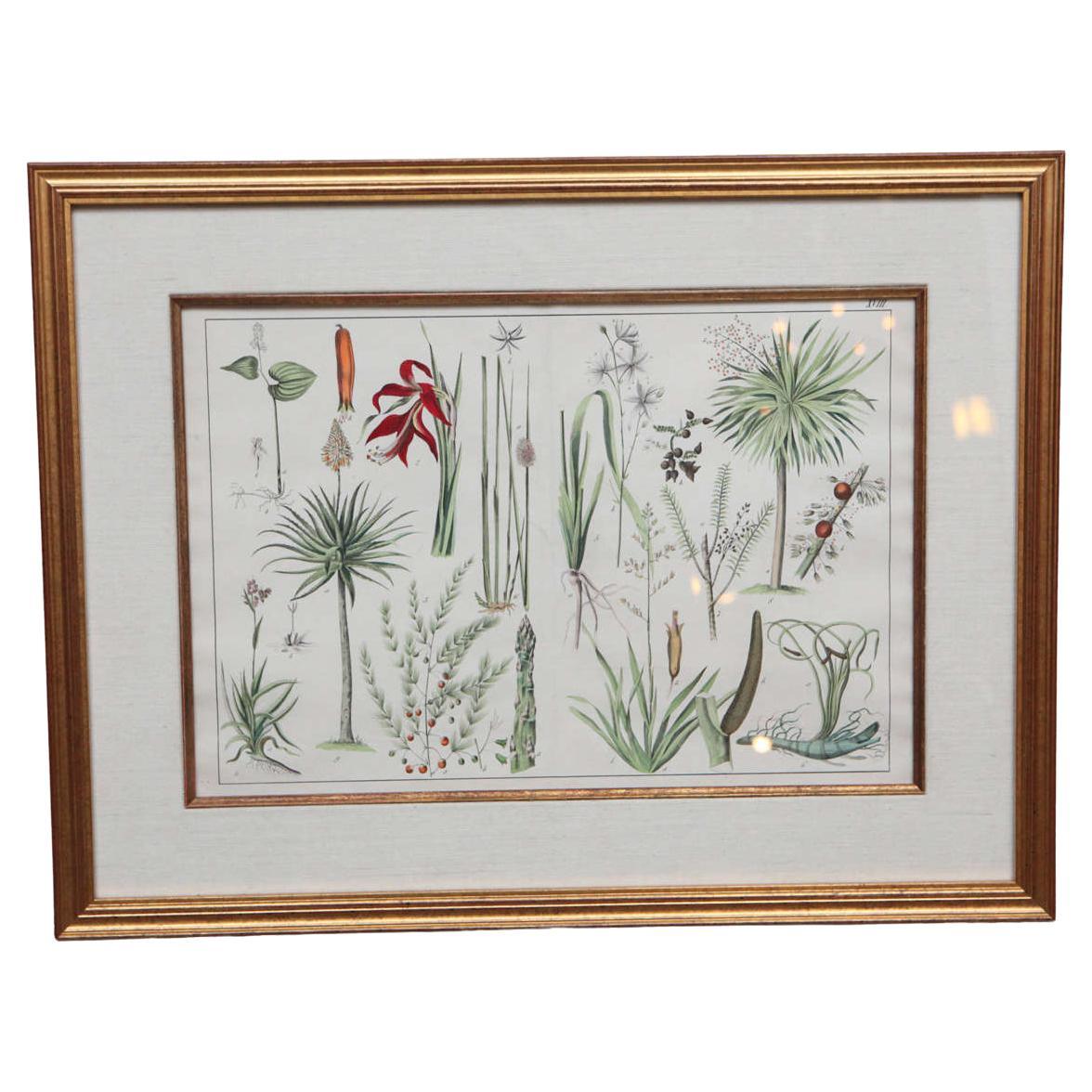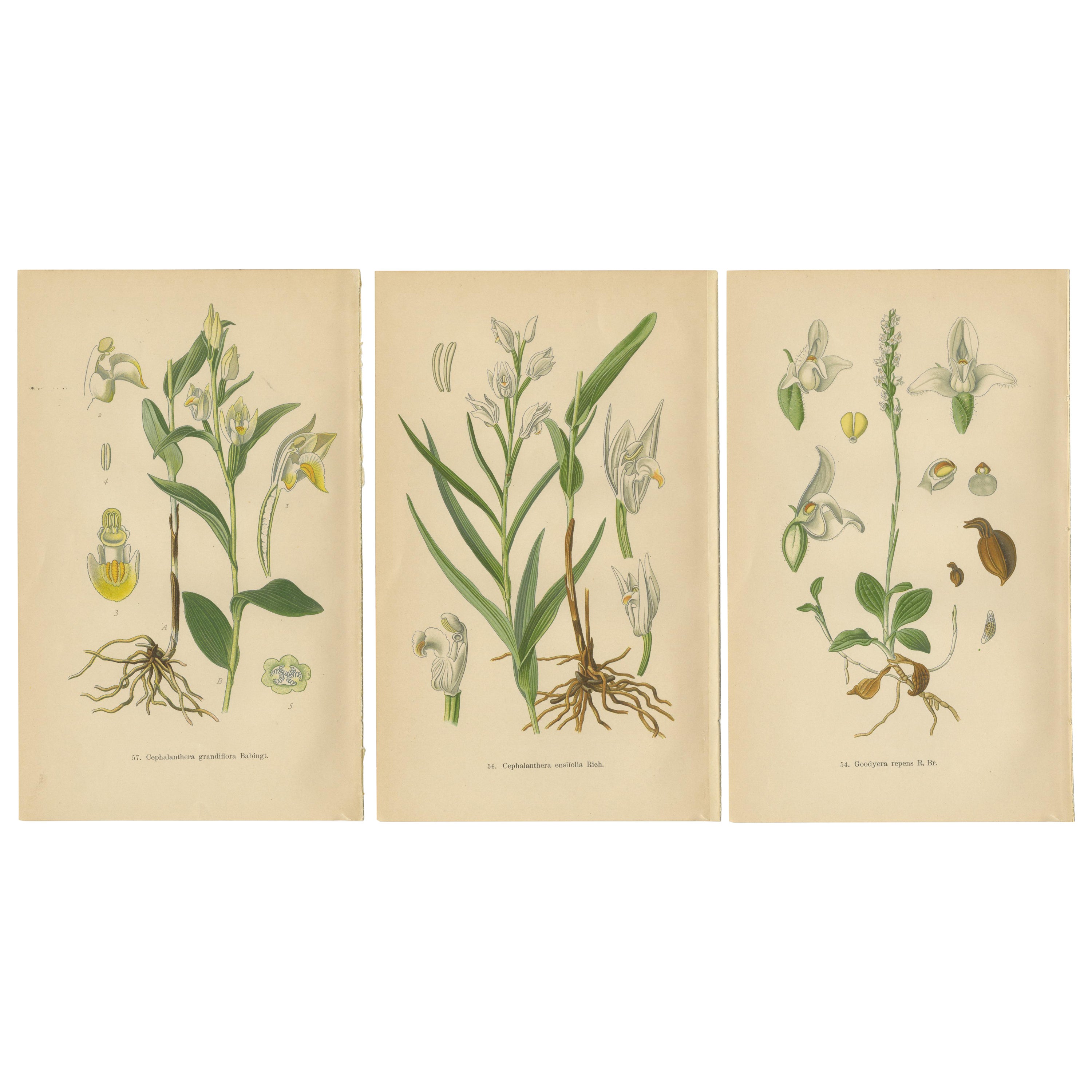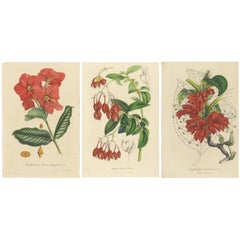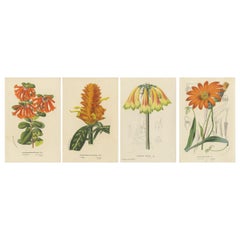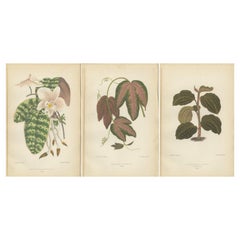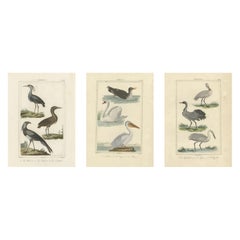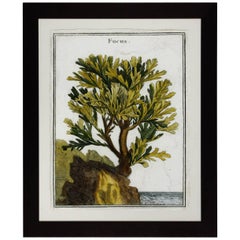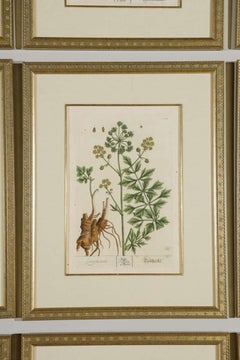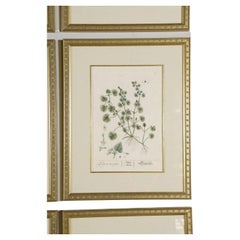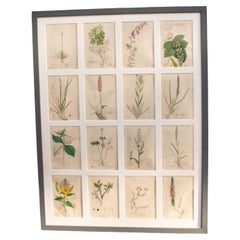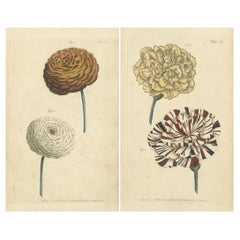
Exquisite Carnation Varieties from 18th Century Botanical Illustrations
View Similar Items
Want more images or videos?
Request additional images or videos from the seller
1 of 6
Exquisite Carnation Varieties from 18th Century Botanical Illustrations
About the Item
- Dimensions:Height: 9.45 in (24 cm)Width: 6.3 in (16 cm)Depth: 0.01 in (0.2 mm)
- Sold As:Set of 2
- Materials and Techniques:
- Period:1790-1799
- Date of Manufacture:Circa 1797
- Condition:The condition of this print is very good, with vibrant colors and clear details that have been well-preserved over time. General age-related toning and/or minor defects from handling, especially the right edges. Study scans carefully.
- Seller Location:Langweer, NL
- Reference Number:Seller: BG-13748-103, BG-13748-1041stDibs: LU3054341346382
About the Seller
5.0
Recognized Seller
These prestigious sellers are industry leaders and represent the highest echelon for item quality and design.
Platinum Seller
Premium sellers with a 4.7+ rating and 24-hour response times
Established in 2009
1stDibs seller since 2017
2,426 sales on 1stDibs
Typical response time: 1 hour
Authenticity Guarantee
In the unlikely event there’s an issue with an item’s authenticity, contact us within 1 year for a full refund. DetailsMoney-Back Guarantee
If your item is not as described, is damaged in transit, or does not arrive, contact us within 7 days for a full refund. Details24-Hour Cancellation
You have a 24-hour grace period in which to reconsider your purchase, with no questions asked.Vetted Professional Sellers
Our world-class sellers must adhere to strict standards for service and quality, maintaining the integrity of our listings.Price-Match Guarantee
If you find that a seller listed the same item for a lower price elsewhere, we’ll match it.Trusted Global Delivery
Our best-in-class carrier network provides specialized shipping options worldwide, including custom delivery.More From This Seller
View AllExquisite Botanical Illustrations from Curtis’s Botanical Magazine (1847)
Located in Langweer, NL
These beautiful hand-colored botanical illustrations, drawn and lithographed by the renowned artist Walter Hood Fitch, were featured in Sir William Jackson Hooker's *"Curtis's Botanical Magazine,"* published in London in 1847. Fitch was one of the most prolific and skilled botanical illustrators of the 19th century, known for his ability to capture the intricate details and vibrant hues of the plants he depicted.
Sir William Jackson Hooker, a famous British botanist and the director of the Royal Botanic Gardens, Kew, commissioned these illustrations as part of his work to document newly discovered plants from around the world. The *Curtis’s Botanical Magazine* has been published since 1787 and remains one of the longest-running botanical periodicals.
Detailed Descriptions of Each Plant
#### 1. **Dipladenia Rosa-campestris** (*Hortul. ex Veitch*)
- **English Name**: Rose Dipladenia
- **Description**: This illustration showcases *Dipladenia rosa-campestris*, a striking flowering plant known for its showy pink to deep red trumpet-shaped flowers. Native to tropical regions of South America, particularly Brazil, *Dipladenia* belongs to the family Apocynaceae and is prized in horticulture for its vibrant blooms and ability to climb. Fitch's illustration emphasizes the waxy leaves and the vivid color of the petals, bringing the plant to life on the page.
#### 2. **Begonia fuchsioides** (*Hook.*)
- **English Name**: Fuchsia-flowered Begonia
- **Description**: The *Begonia fuchsioides* is depicted with its characteristic red, pendulous flowers, which closely resemble the blooms of fuchsia plants. This species of Begonia is native to tropical regions and is popular for its delicate, bell-shaped flowers and glossy leaves. Fitch’s attention to the arrangement of the leaves and the contrast between the flowers' vibrant red and the soft green leaves provides a lifelike representation of this exotic plant.
#### 3. **Agalmyla staminea** (*Blume*)
- **English Name**: Staminate Agalmyla
- **Description**: This illustration captures the unique red tubular flowers of *Agalmyla staminea*, a plant native to Southeast Asia. The species is part of the Gesneriaceae family and is known for its bright, showy flowers that grow in dense clusters. Fitch’s careful rendering of the plant’s leaves and the intricate veining, along with the vibrant red flowers, highlights his talent for bringing the botanical subject to life with both scientific accuracy and artistic flair.
### About the Makers
#### **Walter Hood Fitch** (Artist and Lithographer)
Walter Hood Fitch (1817–1892) was one of the most influential botanical artists of the 19th century, working primarily with Sir William Hooker and later his son, Joseph Dalton Hooker, at Kew Gardens. He produced thousands of illustrations for various botanical publications, including *Curtis’s Botanical Magazine*, where he was responsible for the majority of its plates from 1834 to 1877. Fitch’s mastery of lithography allowed him to create richly detailed and accurate depictions of plants, with a particular talent for illustrating both the botanical structure and the vibrant colors of flowers.
#### **Sir William Jackson Hooker** (Director and Editor)
Sir William Jackson Hooker (1785–1865) was a prominent British botanist and the director of the Royal Botanic Gardens, Kew. Under his leadership, Kew Gardens expanded its collection of plants from around the world, and Hooker was instrumental in promoting the scientific study and illustration of these species. As the editor of *Curtis’s Botanical Magazine*, Hooker collaborated with Fitch to document and share the beauty and diversity of plants with the scientific community and the public.
### The Lithographic Technique
Lithography, particularly chromolithography, was a crucial innovation in botanical illustration. Fitch was skilled in the traditional method of lithography, where an image was drawn onto a stone plate with a greasy substance and then inked for printing. Hand-coloring was often applied afterward to bring the prints to life, as seen in these illustrations. This method allowed for highly detailed, accurate representations of plants and their botanical features, making it invaluable for both scientific study and aesthetic appreciation.
### Conclusion
These prints from *Curtis’s Botanical Magazine* reflect the height of botanical art in the mid-19th century. The combination of Walter Fitch...
Category
Antique 1840s Prints
Materials
Paper
Vibrant Botanical Portraits: Exquisite Plant Illustrations from the 19th Century
Located in Langweer, NL
These illustrations, executed with precision and rich coloration, are fine examples of chromolithography, a technique popular in the 19th century for its ability to produce vivid, mu...
Category
Antique 1870s Prints
Materials
Paper
Verdant Varieties: A Vintage Botanical Collection from 1880
Located in Langweer, NL
The original antique prints are from "Les Plantes à Feuillage Coloré" (Plants with Colored Foliage), Tome Second, which reflects the 19th-century European fascination with botany and...
Category
Antique 1880s Prints
Materials
Paper
$217 Sale Price / set
20% Off
Free Shipping
Elegant Avian Diversity: Illustrations from Buffon's 18th Century Ornithology
Located in Langweer, NL
These hand-colored engravings are various bird illustrations published by Buffon.
They are from the work of Georges-Louis Leclerc, Comte de Buffon, a renowned French naturalist. These bird illustrations are from his monumental work "Histoire Naturelle, Générale et Particulière" (Natural History, General and Particular), which was published in multiple volumes over several decades in the 18th century.
The specific bird prints are from the volumes dedicated to birds ("Histoire Naturelle des Oiseaux"). These volumes were published between 1770 and 1783. The precise publication date for each illustration can vary depending on the volume and edition, but the entire series falls within this time frame. Buffon's "Histoire Naturelle" is celebrated for its detailed and scientifically accurate illustrations, which were a significant contribution to ornithology and natural history at the time.
Here are detailed descriptions of the birds depicted in each of the three prints:
**First Print (Pl. 88):**
1. **Le Héron (The Heron)** - A tall bird with a long neck, a sharp beak, and long legs. The plumage is mostly gray with a lighter chest and dark wings. It stands on a grassy patch.
2. **Le Butor (The Bittern)** - A medium-sized bird with a stout body and a thick neck. The plumage is brown with darker streaks, blending well with marshy surroundings. It stands on a small patch of ground.
3. **Le Secretaire (The Secretary Bird)** - A large bird with an eagle-like body and crane-like legs. It has long tail feathers and distinctive crest feathers on its head. The plumage is a mix of gray, black, and white. It stands on a grassy area.
**Second Print (Pl. 105):**
1. **L'Albatros (The Albatross)** - A large seabird with long wings and a stout body. The plumage is white with dark wings. It is depicted floating on water.
2. **Le Cygne (The Swan)** - A graceful bird with a long neck and white plumage. It has an orange beak with a black base and is shown swimming.
3. **Le Pélican (The Pelican)** - A large bird with a long beak and a distinctive throat pouch. The plumage is white with a hint of pink. It stands on a rock near the water.
**Third Print (Pl. 96):**
1. **La Spatule (The Spoonbill)** - A bird with a long, flat, spoon-shaped bill. The plumage is white with a slight pink tinge. It stands on a grassy patch.
2. **La Grue (The Crane)** - A tall bird with long legs and neck, mostly gray plumage with black wing tips. It has a red crown on its head and stands on a grassy area.
3. **L'Aigrette (The Egret)** - A slender bird with white plumage, long neck, and black legs. It has delicate plumes on its back and is shown standing near water.
These illustrations are characteristic of the detailed and accurate depictions typical of Buffon's work in natural history.
These birds are found in various habitats across the world. Here are the typical regions and habitats for each bird:
**First Print (Pl. 88):**
1. **Le Héron (The Heron)** - Herons are widely distributed across the world, found in both freshwater and coastal habitats. They are commonly seen in wetlands, marshes, rivers, and along lakeshores.
2. **Le Butor (The Bittern)** - Bitterns are also found in wetlands and marshes, with a preference for dense reed beds. They have a wide distribution, including parts of Europe, Asia, Africa, and the Americas.
3. **Le Secretaire (The Secretary Bird)** - Native to Sub-Saharan Africa, Secretary Birds inhabit open grasslands and savannas. They are terrestrial birds often seen stalking through tall grass in search of prey.
**Second Print (Pl. 105):**
1. **L'Albatros (The Albatross)** - Albatrosses are primarily found in the Southern Ocean and North Pacific. They are oceanic...
Category
Antique Late 18th Century Prints
Materials
Paper
Exquisite Botanicals from Revue Horticole: A 19th-Century Garden Showcase
Located in Langweer, NL
Magnificent Botanical Chromolithographs from Revue Horticole, Circa 1885
Artist and Lithographer Details:
- Artist (Del. - Delineavit): The mention of "Godard del." signifies that ...
Category
Antique 1850s Prints
Materials
Paper
Orchid Elegance: Masterpieces of Botanical Illustration from 1904
Located in Langweer, NL
The collage comprises three detailed botanical illustrations from Walter Müller's 'Abbildungen der in Deutschland und den angrenzende Gebieten vor...
Category
Antique Early 1900s Prints
Materials
Paper
You May Also Like
18th Century Botanical Seaweed Print from Natural Curiosities
By Joseph Pitton de Tournefort, Claude Aubriet
Located in Rio Vista, CA
Stunning 18th century colored botanical study print after Joseph Pitton de Tournefort (French 1656-1708) of Fucus algae seaweed sourced from "Elements de Botanique", printed in 1797....
Category
20th Century American Victorian Prints
Materials
Plexiglass, Wood, Paper
$2,200 Sale Price
21% Off
18th Century Framed Botanical Prints
Located in Los Angeles, CA
18th century hand tinted assorted framed botanicals by Elizabeth Blackwell. The image measurement is 12.5 inches H x 8.5 inches W. The framed prints are sold individually. The price ...
Category
Antique 18th Century and Earlier French Prints
Materials
Paper
$850 / item
18th Century Framed Botanical Prints
Located in Los Angeles, CA
18th century Hand Tinted Assorted Framed Botanicals by Elizabeth Blackwell. The image measurement is 12.5 inches h x 8.5 inches w. The framed prints are priced individually. The pr...
Category
Antique 18th Century and Earlier French Prints
$850 / item
18th century James Sowerby botanical Engravings
By James Sowerby
Located in Seaford, GB
Rare Antique Botanical Prints by James Sowerby (1757–1822): A Timeless Tribute to British Flora
Step into the enchanting world of 18th-century botanical artistry with our exceptiona...
Category
Antique 1790s British Georgian Prints
Materials
Paper
$3,500 / set
Pair of 18th Century Framed Botanicals
Located in Los Angeles, CA
This pair of 18th century hand tinted lithographs have butterflies and insects throughout. The images themselves are 12" by 9" Framed in 22k giltwood frames by Jerry Solomon.
Category
Antique 18th Century French Neoclassical Prints
Materials
Giltwood, Paper
$2,850 / set
18th Century Large Hand-Tinted Botanical Lithograph
Located in Los Angeles, CA
18th century large hand-tinted botanical lithographs. Beautiful images to hang in powder room, framing doorways, kitchens or anywhere! The measurement below is for the frame only. ...
Category
Antique Early 18th Century English Prints
Materials
Paper
